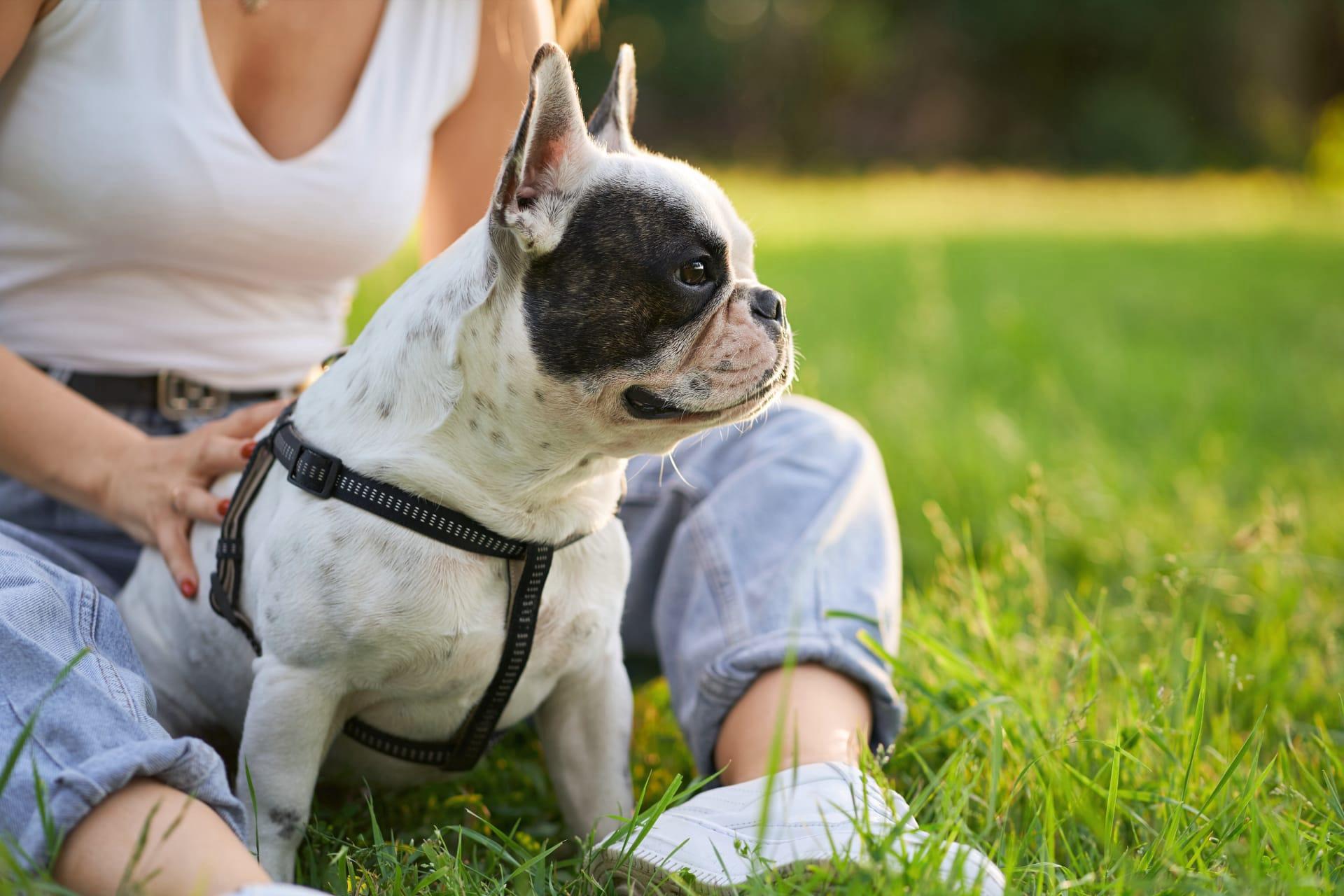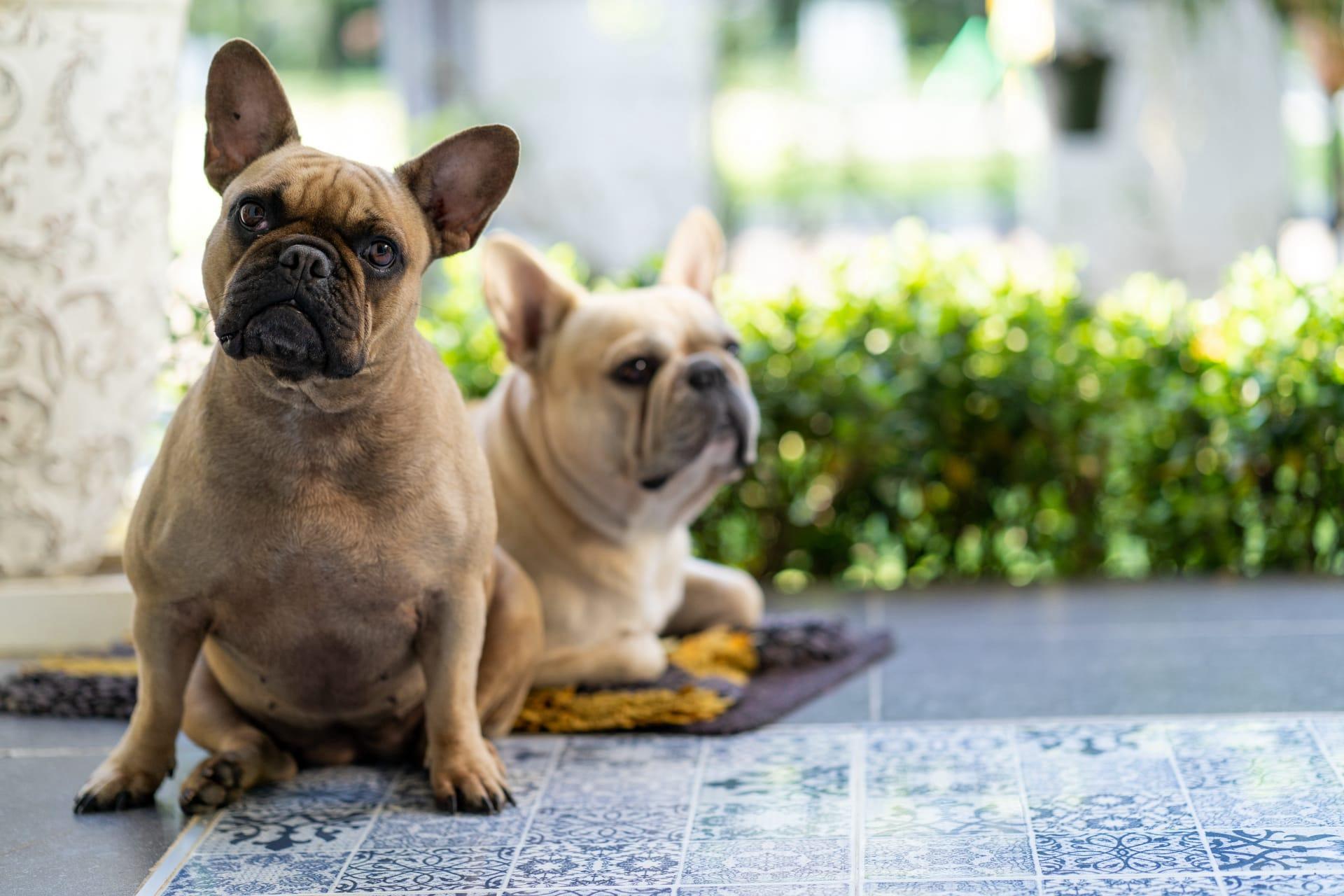French Bulldogs Trivia
- Home /
- Trivia Question /
- Animal /
- French Bulldogs Trivia
1
Question: What unique feature makes French Bulldogs easily recognizable among other dog breeds?
Answer: French Bulldogs are easily recognized by their bat-like ears, which are wide at the base and rounded at the top. Unlike English Bulldogs, Frenchies have this distinctive ear shape that stands erect, giving them an alert and curious expression. Additionally, they possess a muscular, compact body structure, weighing under 28 pounds (about 12.7 kilograms), and have a smooth coat with a variety of colors including brindle, fawn, and white. Their short snout, which classifies them as brachycephalic breeds, contributes to their distinctive snuffling sounds.
Question: How do French Bulldogs adapt to different living environments?
Answer: French Bulldogs are remarkably adaptable to various living conditions, making them excellent companions for both city dwellers and those living in suburban or rural areas. Their small size and moderate energy levels mean they do well in apartments as they don't require a yard. However, they are sensitive to extreme temperatures due to their brachycephalic nature, requiring indoor living conditions with air conditioning in hot weather and warm clothing during cold months. They thrive on human interaction and can develop separation anxiety if left alone for long periods, emphasizing the need for a loving, attentive owner.

2
Question: Is it true that French Bulldogs are low-energy dogs that require minimal exercise?
Answer: Contrary to the common misconception that French Bulldogs are low-energy and require minimal exercise, they actually benefit from regular, moderate exercise to maintain their health. While it's true they are not as high-energy as some breeds, a daily routine of short walks and play sessions is essential for their physical and mental well-being. Due to their brachycephalic features, care should be taken to avoid vigorous exercise, especially in hot or humid weather, to prevent breathing difficulties and overheating.
Question: Can French Bulldogs swim?
Answer: French Bulldogs are not natural swimmers due to their brachycephalic face structure, short legs, and heavy torso. This physical composition makes it difficult for them to keep their nose and mouth above water, posing a significant risk of drowning. Therefore, it's a widespread misunderstanding that all dogs are instinctive swimmers. Owners should always supervise their French Bulldogs around water and consider using a dog life jacket for an extra layer of safety during any aquatic activities.

3
Question: What are the common health concerns associated with French Bulldogs?
Answer: French Bulldogs are prone to several health issues, largely due to their unique physical structure. Common concerns include brachycephalic syndrome, which affects their breathing; hip dysplasia, a condition that can lead to arthritis or lameness; and skin conditions like allergies and dermatitis due to their folds. They are also at risk for spinal disorders, eye problems, and heart defects. Regular veterinary check-ups and a well-managed diet are crucial for mitigating these risks and ensuring a healthy lifestyle.
Question: How does the French Bulldog's diet impact its health?
Answer: The diet of a French Bulldog plays a significant role in its overall health and well-being. They require a balanced diet rich in high-quality protein, fats, and carbohydrates, along with essential vitamins and minerals. Given their propensity for obesity, portion control and avoiding high-calorie treats are important. Specific diets may also be recommended to address allergies and sensitivities, which are common in the breed. Consulting with a veterinarian to tailor a diet plan can help prevent nutritional deficiencies and manage health issues.

4
Question: Why are French Bulldogs considered poor breeders, and how does this affect their population?
Answer: French Bulldogs are known for their breeding challenges, primarily due to their narrow hips which make natural mating and birthing difficult. Most French Bulldogs are born through Caesarean section, increasing the risk and cost of breeding. This, combined with their high demand, contributes to their relatively high price. The breeding difficulties also lead to smaller litter sizes, averaging three to five puppies, impacting the overall population growth and contributing to the ethical debate around breeding practices for brachycephalic breeds.
Question: How do French Bulldogs communicate with their owners and others?
Answer: French Bulldogs have a unique way of communicating through a combination of vocalizations, body language, and facial expressions. They are known for making a variety of sounds including barks, yawns, and a distinctive snorting sound, which they use to express different needs and emotions. Their expressive eyes and the tilt of their ears can also indicate their mood, whether curious, happy, or seeking attention. They are very sociable animals and use these communications to engage with their owners and other pets, showcasing their affectionate and playful nature.

5
Question: What is the historical origin of the French Bulldog breed?
Answer: The French Bulldog originated in the 19th century when lace workers from England moved to France, taking with them smaller bulldogs to be used as companions and to control rats. In France, these dogs were crossed with other breeds, possibly terriers and pugs, to develop the French Bulldog. The breed quickly became popular in French society, including among artists, writers, and fashion designers, leading to its association with Parisian life. Its popularity was cemented by its charming personality, distinctive appearance, and adaptability to urban living.
Question: How long do French Bulldogs typically live, and what factors influence their lifespan?
Answer: French Bulldogs have an average lifespan of 10 to 12 years. Factors influencing their lifespan include genetics, diet, exercise, and preventive veterinary care. Health issues common to the breed, such as brachycephalic syndrome, spinal disorders, and joint diseases, can affect their quality of life and longevity. A healthy lifestyle, including proper nutrition, regular exercise tailored to their capabilities, and routine health check-ups, can help maximize their life expectancy. Additionally, purchasing from reputable breeders who screen for genetic health issues can also contribute to a longer, healthier life.